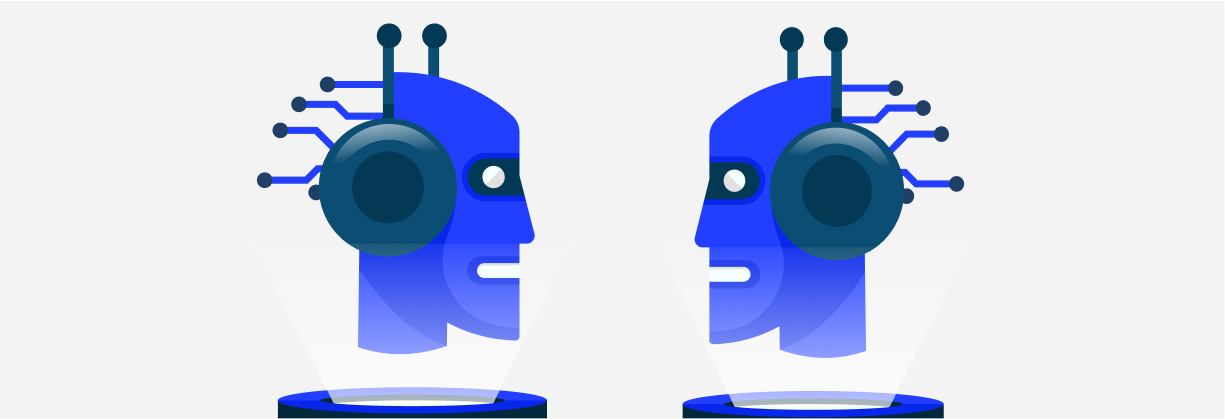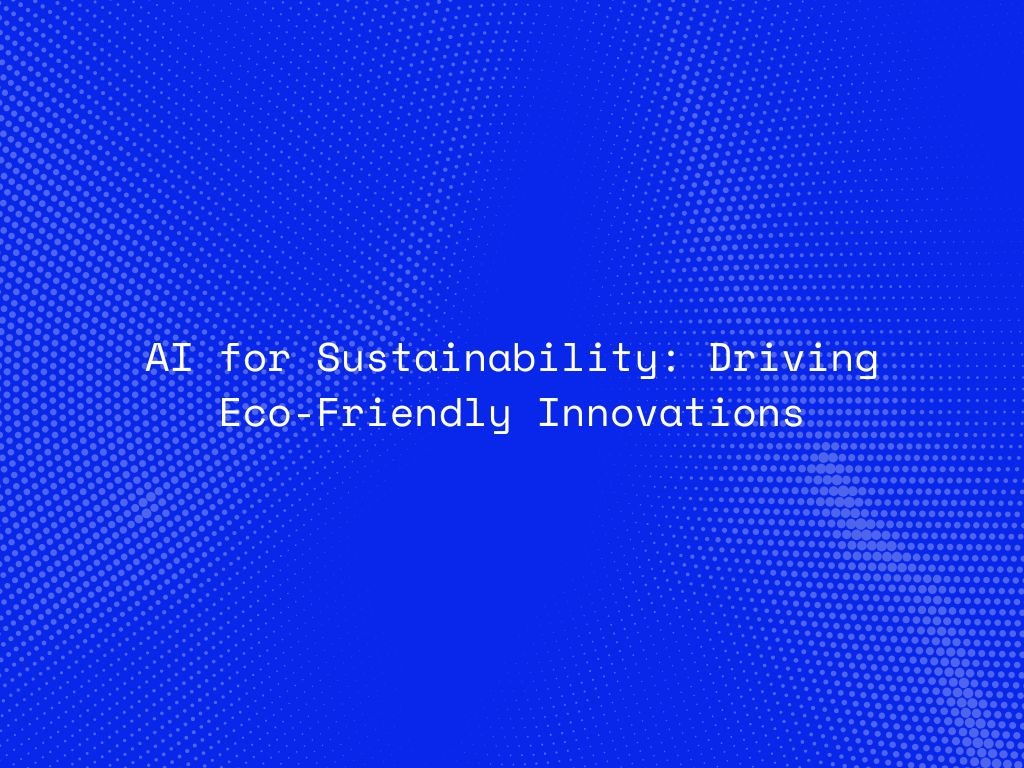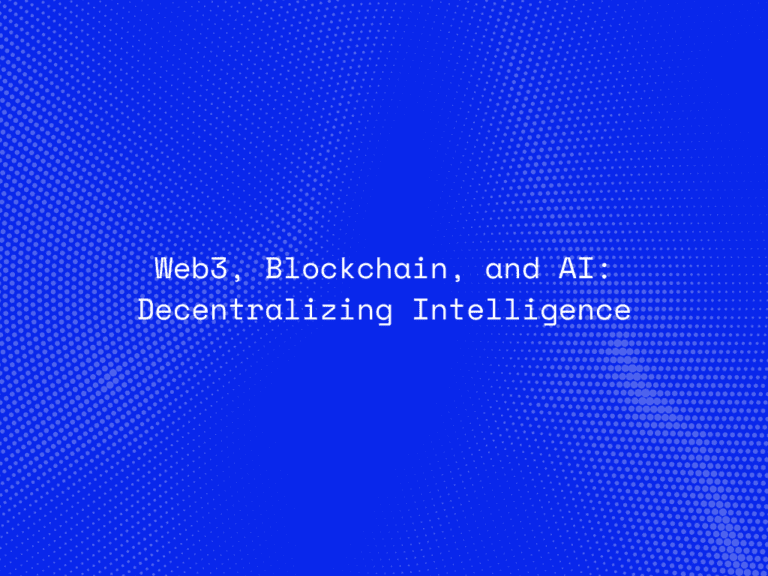Artificial Intelligence (AI) is no longer confined to tech labs or futuristic concepts—it’s now at the heart of one of humanity’s greatest challenges: sustainability. As climate change accelerates and natural resources dwindle, businesses, governments, and innovators are turning to AI to help reduce environmental impact, improve resource efficiency, and build a more sustainable future.
From optimizing supply chains to improving energy usage and monitoring biodiversity, AI offers scalable solutions that can address both macro and micro environmental issues. In this blog, we explore how AI is becoming a driving force in eco-friendly innovation across various industries.
How AI Supports Sustainability Efforts
1. Energy Optimization and Smart Grids
Energy systems are being redefined with AI at their core. Smart grids use AI to balance electricity demand and supply in real time, reducing reliance on fossil fuels and preventing energy waste.
-
Predictive maintenance helps reduce outages and increases the efficiency of energy infrastructure.
-
AI-driven forecasting allows better integration of renewable energy sources like solar and wind by predicting output based on weather patterns.
-
Smart buildings adjust lighting, heating, and cooling based on occupancy and usage trends, reducing energy consumption.
2. Sustainable Agriculture and Food Systems
Agriculture is one of the most resource-intensive industries. AI applications are helping minimize environmental impact while maintaining high yields.
-
Precision farming uses AI to determine the optimal amount of water, fertilizer, and pesticide needed for each crop, reducing waste and pollution.
-
Drone and satellite data combined with AI analysis provide insights on crop health, soil quality, and pest control.
-
Supply chain optimization minimizes food waste by predicting demand and adjusting logistics accordingly.
3. Climate Modeling and Environmental Monitoring
AI plays a pivotal role in understanding and addressing climate change.
-
Advanced climate models powered by machine learning help predict temperature changes, sea level rise, and extreme weather events with greater accuracy.
-
AI algorithms process large volumes of satellite and sensor data to monitor deforestation, glacier melting, and marine health.
-
Early warning systems driven by AI can anticipate natural disasters and inform timely disaster response planning.
4. Waste Management and Recycling
Managing waste more efficiently is essential to sustainability.
-
AI-powered robots are being deployed in recycling plants to sort materials with higher accuracy than human workers.
-
Computer vision identifies different types of waste and sorts recyclables automatically.
-
Predictive analytics help municipalities optimize garbage collection routes, reducing fuel usage and emissions.
5. Transportation and Emissions Reduction
AI is transforming how people and goods move, with sustainability at the forefront.
-
Smart traffic management systems reduce congestion and lower emissions by adjusting signals and traffic flow dynamically.
-
Electric and autonomous vehicles use AI for route optimization, battery management, and energy efficiency.
-
Fleet management tools powered by AI track and reduce the carbon footprint of logistics and delivery systems.
6. Green Urban Development and Smart Cities
Cities are responsible for over 70% of global carbon emissions. AI enables smarter, more sustainable urban environments.
-
Urban planning tools simulate how buildings, traffic, and green spaces affect carbon emissions and air quality.
-
AI-enabled water and waste systems help reduce resource usage and improve recycling rates.
-
IoT sensors combined with AI provide real-time data for managing public transport, energy, and pollution.

Benefits of AI in Sustainability
-
Scalability: AI solutions can be implemented at local, regional, and global levels.
-
Efficiency: By identifying patterns and anomalies, AI reduces resource waste and improves operational efficiency.
-
Real-time Monitoring: AI provides instant insights that traditional methods can’t match.
-
Proactive Decision-Making: AI enables forecasting and planning rather than reactive responses.
Challenges and Ethical Considerations
While the potential of AI for sustainability is enormous, it comes with challenges:
-
Energy Consumption of AI Models: Training large models requires significant computing power, which can have its own environmental impact.
-
Data Privacy and Security: Especially in sectors like agriculture and urban planning, sensitive data must be protected.
-
Bias in Data: Inaccurate or non-representative data can lead to flawed predictions or decisions.
-
Access and Equity: Smaller businesses or developing regions may lack access to the infrastructure needed for AI adoption.
To ensure AI is a positive force in sustainability, it’s essential to adopt responsible AI practices—transparent models, ethical data use, and an emphasis on equitable access.
Looking Ahead: The Green Tech Future
The future of AI in sustainability will likely include:
-
Circular economy models where AI helps reuse and regenerate resources.
-
Decentralized energy systems powered by AI for peer-to-peer energy sharing.
-
AI-designed green infrastructure that adapts to environmental changes.
As governments commit to net-zero goals and consumers demand greener practices, the role of AI will only grow. What makes AI especially promising is its ability to not just solve today’s problems but anticipate tomorrow’s challenges and respond in real time.
Conclusion
AI is not just a technological advancement—it’s a powerful ally in our quest for a sustainable future. From cutting emissions and conserving biodiversity to revolutionizing agriculture and urban planning, AI is helping us move toward smarter, cleaner, and more efficient systems.
Harnessing this potential responsibly could be the key to achieving global climate goals and ensuring a livable planet for generations to come.




